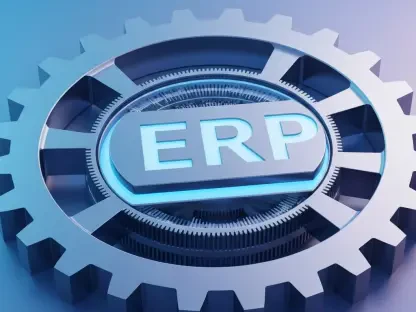I’m thrilled to sit down with Anand Naidu, our resident development expert with a wealth of knowledge in both frontend and backend technologies. Anand brings a unique perspective on coding languages, particularly Kotlin, and today we’re diving into the latest update to JetBrains’ AI agent development framework, Koog 0.4.0. This release introduces exciting features like native structured output, expanded platform support, and enhanced tools for building robust AI agents. Our conversation explores how these advancements streamline development, improve reliability, and open new possibilities for developers working with Kotlin. Let’s get started!
What can you tell us about the key features of Koog 0.4.0 and how they enhance the experience for developers building AI agents with Kotlin?
Koog 0.4.0 is a game-changer for Kotlin developers working on AI agents. It introduces native structured output to ensure consistent data formats from large language models, adds support for Apple’s iOS platform through Kotlin Multiplatform, and brings in compatibility with cutting-edge models like GPT-5. Additionally, features like OpenTelemetry integration and the RetryingLLMClient make agents more observable and resilient. These updates collectively make development smoother, more predictable, and adaptable to various environments, which is huge for anyone building production-ready AI solutions.
How does the native structured output in Koog 0.4.0 address the challenges developers face with large language models not delivering the expected data format?
Native structured output tackles a common pain point where LLMs sometimes fail to return data in the exact format a developer needs, which can break workflows. Koog 0.4.0 leverages models that support structured output natively when available, ensuring precision. When a model doesn’t support it, the framework falls back to a smart prompt-and-retry system paired with a fixing parser—often powered by a separate model—to reshape the output until it matches the required structure. This pragmatic approach with built-in guardrails saves developers from endless troubleshooting and keeps things running smoothly in production.
With Koog 0.4.0 supporting Apple’s iOS platform, what makes this significant for developers using Kotlin Multiplatform?
Supporting iOS is a massive step forward because it aligns with Kotlin Multiplatform’s promise of write-once, deploy-anywhere. Developers can now create a single AI agent and deploy it seamlessly across iOS, Android, and JVM backends without rewriting core logic. This cuts down development time and effort significantly, as the same strategy graphs, observability tools, and tests work across platforms. It’s a huge win for consistency and efficiency, though I’d note that for iOS specifically, developers need Koog 0.4.1 to build successfully, as there are some version-specific quirks to iron out.
Can you explain how Koog 0.4.0’s support for GPT-5 models improves the development process compared to working with older models?
GPT-5 support in Koog 0.4.0 brings developers access to a more advanced model with better reasoning capabilities, which is critical for complex tasks. What’s really neat is how Koog integrates custom parameters like reasoningEffort, allowing developers to tweak the balance between output quality, cost, and speed for each call. Compared to older models, this flexibility means you’re not stuck with one-size-fits-all performance—you can optimize for budget on simpler tasks or crank up the depth for intricate problems, making the whole process more efficient and tailored.
Let’s dive into the OpenTelemetry support in Koog 0.4.0. How does this feature help developers monitor and improve their AI agents?
OpenTelemetry support is a fantastic addition for observability. It integrates with tools like W&B Weave and Langfuse, letting developers track detailed metrics like token usage and cost per request. Beyond numbers, it also reveals nested agent events, which is crucial for debugging—seeing how different components interact helps pinpoint where things go wrong. For improvement, this transparency means you can analyze performance bottlenecks or cost spikes and tweak your agent’s design accordingly. It’s like having a dashboard into your AI’s inner workings, which is invaluable for refining production systems.
Koog 0.4.0 introduced the RetryingLLMClient with presets like Conservative, Production, and Aggressive. Can you walk us through why this matters for developers dealing with connectivity issues?
The RetryingLLMClient is all about resilience. When working with LLMs, you often run into timeouts, network hiccups, or tool failures, which can stall everything. This feature offers presets—Conservative for cautious retries, Production for a balanced approach, and Aggressive for persistent attempts—to handle those disruptions automatically. Developers can pick a preset based on their needs or even fine-tune retry settings for specific scenarios. It reduces manual intervention and keeps agents operational under flaky conditions, which is a lifesaver in real-world deployments where stability is key.
What is your forecast for the future of AI agent development with frameworks like Koog, especially in terms of platform support and model integration?
I’m really optimistic about where frameworks like Koog are headed. We’re likely to see even broader platform support, potentially extending to emerging ecosystems beyond iOS and Android, as cross-platform development becomes the norm. On the model integration front, I expect frameworks to keep pace with newer, more specialized LLMs, offering even finer control over parameters to balance cost and performance. Additionally, observability and reliability features will probably deepen, with more tools to monitor and optimize AI behavior in real-time. It’s an exciting time—developers will have more power and flexibility to build sophisticated, scalable AI agents without getting bogged down by technical limitations.









